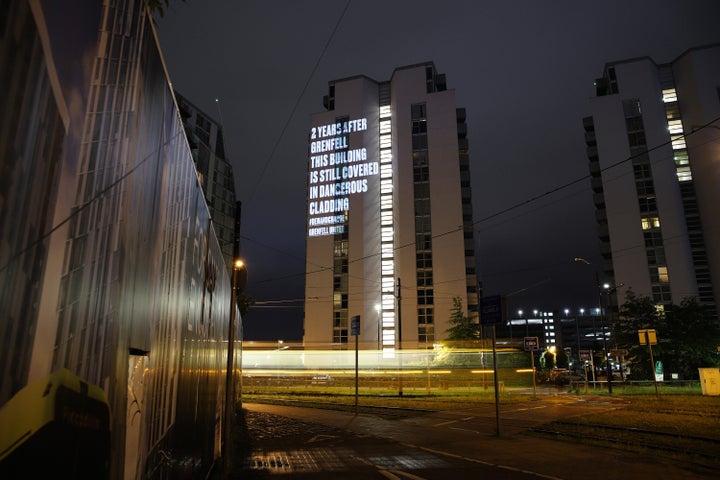MPs have warned of a repeat of the Grenfell Tower disaster as they accused the government of “not doing enough” to remove dangerous cladding from tower blocks.
In a damning report, parliament’s housing, communities and local government committee warned ministers the £200 million set aside to strip buildings of the flammable material blamed for the tragedy was not enough.
It also criticised the government for limiting the financial support it was offering to properties covered in aluminium composite material (ACM) - namely the same covered on Grenfell, It has left buildings wrapped in similarly dangerous material vulnerable, the MPs said.
Some 328 residential and publicly-owned high-rises are still covered at least in part in ACM cladding.
The MPs hit out at the government for being “far too slow” in its response to the blaze, and warned it must “pick up the pace of reform before it is too late and we have another tragedy on the scale of Grenfell Tower”.
The disaster in June 2017 killed 72 people.
In May, residents of towerblocks still covered in flammable cladding told HuffPost UK they fear being made either homeless or bankrupt because they have been “abandoned” by the government.
The problems largely stem from owners and developers of private high-rise buildings refusing to remove the covering, leaving leaseholders to pay for a removal bill they cannot afford.

Labour MP Clive Betts, the committee’s chairman, accused the government of being “far behind” where it should be in its response.
He said: “Further delay is simply not acceptable. The government cannot morally justify funding the replacement of one form of dangerous cladding, but not others.
“It should immediately extend its fund to cover the removal and replacement of any form of combustible cladding, as defined by the government’s combustible cladding ban, from any high-rise or high-risk building.”
The report said greater urgency was needed to establish an effective regulatory system to ensure building safety in the long-term.
The committee said it was “frustrated” that more than a year since the publication of the final report of the Independent Review of Building Regulations and Fire Safety, the government had only recently started consulting on its proposals for the new regulatory regime.
“The government must pick up the pace of reform, before it is too late and we have another tragedy on the scale of Grenfell Tower,” it stated.
The committee report calls for the government to set a “realistic and short deadline” for the removal of any form of dangerous cladding and introduce sanctions on building owners.
The committee said a “comprehensive” programme of health services must be provided to survivors, beyond what has already been announced by the Government.
It also wants action to be taken to understand any long-term environmental impacts around the Grenfell site.
Research by the University of Central Lancashire found there were toxic chemicals in soil samples taken from around the Grenfell site six months after the fire.

